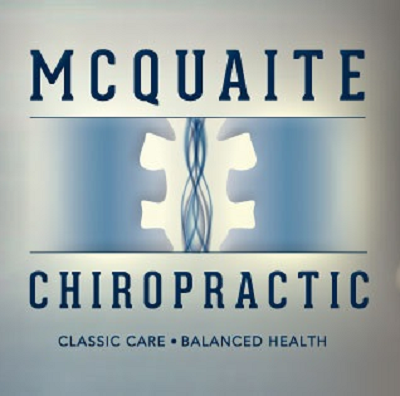
Jun 30, 2021 | Uncategorized
Here in Bucks County, Pa. summer means BBQs, yard work, and cool nights spent enjoying the fireflies. Yet, if you’re like a lot of people, it also might mean overdoing it in the garden or in your last golf round.
Some of you are probably avid bikers, hikers, or even paddleboarders at Tyler State Park. It’s all fun and games until a wrong move leaves you aching and sidelined from the fun.
Turn these “preventive maintenance” tips into active habits and you’ll protect yourself from common summer injuries.
Skip Common Summer Injuries With These Health Habits
Chances are, these will sound familiar to you. There’s a reason they’re perennial favorites in lifestyle magazines, blogs, and news channels. They’re important to your well-being. Fortunately, they’re not that difficult and you can adapt them for your activity level.
1- Warm Up and Cool Down – You’ve heard all the advice about warming up and cooling down before exercise but do you do it? Depending on your age and fitness level, it’s better to do more than you might think is necessary.
YouTube is a wealth of warm-up and cool-down exercises geared toward specific activities. For example, Marshfield Clinic Health Systems recommends these warm-ups to loosen up your back and other muscles for gardening. Here’s another one from a physiotherapist.
Not a gardener? You can always Google, “YouTube + warm-up exercises + your activity.”
2- Start out Slow – If you’ve been more sedentary than active lately, try boosting your activity levels by 10-15 minutes a day in a slower ramp up. There are a ton of fitness apps you can try. Fiton turns your living room into a gym. Just choose the type of workout you want to do and the length of time and boom. You’ve got dozens or hundreds of options available to you all led by certified trainers.
3- Take a Break – If you’re tired, take a break or call it quits for the day. A lot of common summer injuries happen because people push themselves and ignore the signs their body is telling them. Getting outside in the sunshine and fresh air is great. What’s not great is ignoring the signs of fatigue or dizziness. That’s when accidents tend to happen. Also, stay hydrated.
4-Chiropractic care – Of course, we’re going to mention this one! We are a chiropractic blog after all. Yet, regular chiropractic care is a great tool for a healthy body. Regular visits help keep your spine aligned and healthy. That way, your blood, and oxygen flow in, around, and through your body in their best way. When blood and oxygen flow freely, messages get from your brain to your cells and you feel pretty good.
If you’re not already using chiropractic care as part of your wellness plan, we encourage you to consider it!
5- Massage therapy – Massage is another way to stimulate your body’s circulation system. It reduces tension and helps with joint flexibility. Massage also promotes relaxation and loosens your muscles. Combined with chiropractic care, it’s a great partner. The massage relaxes your tense muscles and a chiropractic visit shifts tendons and ligaments back into place. Because your muscles are more relaxed, they’re less likely to push those tendons and ligaments right back out.
Both massage and chiropractic care are great ways to stimulate healing in your body from the inside out.
As you can see, preventing common summer injuries boil down to having a wellness plan and sticking to it. It can be as simple as having a warm-up and cool-down practice before you garden, golf, bike, or whatever you do. That and paying attention to your body can go a long way. We encourage you to add chiropractic visits as additional maintenance. Dr. McQuaite in Doylestown offers a free consultation to see if chiropractic care is right for you.

Feb 26, 2021 | pediatric chiropractor, Uncategorized

Chiropractors can do so more than help with back pain. If your child suffers from colic, asthma, sports injuries, or other problems, a child chiropractor may be able to help.
The point of chiropractic care is prevention and restoration for all ages. And, yes, even children can have physical pains big and small. However, if you’re nervous about the idea of a chiropractor “cracking” your child’s spine, you’re not alone. It’s natural to feel a little worried about exposing your children to something new.
Though chiropractic care is safe. The Association of Chiropractic Colleges states,
“Chiropractic is concerned with the preservation and restoration of health and focuses particular attention on the subluxation. A subluxation is a complex of functional and or pathological articular changes that compromise neural integrity and may influence organ system function and general health.”
In plain English, subluxation references musculoskeletal problems. For example, when you have a pinched nerve or pain in your neck from hours of sitting slumped over the computer, your spine is out of alignment and it can be painful. This happens with kids too.
Chiropractic and Newborns
You’ve probably heard of fussy newborns. Maybe you have one yourself. It turns out there’s a host of reasons why children may be irritable. They might have pains like headaches, muscle spasms, or be colicky. Colic is described as when a newborn cries daily at predictable times. There could be many reasons why your child does this. Doctors connect it to everything from a stressed digestive system to general anxiety.
And since they’re pre-verbal, their primary means of communication is to cry, as you know.
In some cases, newborns have shoulder or neck pain from the birth experience itself. A child chiropractor can assess your child and use a small amount of pressure on acupressure points. This pressure is appropriate for a newborn and will help them release.
Many children feel better within a visit or two. Additional visits will help their tiny bodies grow in alignment with their bones and ligaments in the right position.
But what if you have older children? How can chiropractic care help them?
Child Chiropractic Care Can Help with Sports Injuries
Some kids start sports almost as soon as they can run. T-ball and kiddie soccer come to mind. Some of those kids stay in sports for the next 15 years or so. Some of them have coaches who are mindful of stretching and ways to protect their growing bodies. Others are not as aware of the benefits of child chiropractic care as a way to protect against injuries. Or help heal when injuries do occur.
Strains and sprains are some of the most common sports injuries. Sometimes kids make them worse by playing despite the pain. In some cases, these young athletes take pain-killers to mask the pain instead of using the pain as a cue to get help.
However, there’s a better way. That way is to include child chiropractic care in your child’s health regimen. We can work together to keep your child’s developing body healthy and, hopefully, avoid painful sports injuries.
Here at McQuaite Chiropractic, we’re conveniently located next to CB West High School in Doylestown, Pa. Do you have a young athlete or child who may benefit from a child chiropractor?
We offer a free consultation so why not come in and see if chiropractic care can be good for your child?

Dec 19, 2020 | Uncategorized
Let me ask you a question. Do you ever think about “wellness?” As in, “I want wellness?”
These days, “wellness” is a buzzy catchphrase that pertains to everything from essential oils to yoga to chiropractic care. And since no one wants “unwellness” or sickness, it sounds like a good objective.
But what is wellness chiropractic? Is it different from regular chiropractic?
In this post, we’ll define the “wellness” concept and wellness chiropractic. That way, you’ll be able to decide if it fits with your health goals.
First, the Global Wellness Institute defines wellness as “the active pursuit of activities, choices, and lifestyles that lead to a state of holistic health.”
Hmmm…. That makes sense. Framed this way, wellness in this way is an active state and not simply “not well.” So when you actively choose healthy foods and regular exercise you’re engaging in activities that promote wellness.
But it goes deeper than that.
Pfizer links wellness referencing the World Health Organization who says “Health is a state of complete physical, mental and social well-being and not merely the absence of disease or infirmity.
Going further, both Pfizer and the Global Wellness Institute include social, mental, and physical goals within the larger categories of wellness.
Those include getting enough sleep, eating healthy meals, exercising regularly, and incorporating other healthy habits like making time for family and friends and other self-care activities.
Wellness Chiropractic Fits Into Active Wellness Activities
Whether you’re new to chiropractic or you think of it as a back-pain relief technique, you might be surprised to consider all of its benefits in your wellness plan.
You probably already know that chiropractic care focuses on your spine. You have one spine and chiropractors like to say “it’s your lifeline.” It’s more than “just” the bones and discs, that gives your body flexibility and holds you upright. It also connects your head to your toes via miles of nerves and tendons that make up your nervous system.
A healthy spine means your nervous system can communicate easily with all the cells in your body. When your body can communicate with itself, it promotes self-healing.
Just like taking Vitamin C, getting enough sleep, and eating well can help your body function well, wellness chiropractic can also play a role. It reduces neck and shoulder pain and can even contribute to reduced ankle or knee pain.
When combined with other wellness activities, chiropractic care can contribute to stress reduction — we recommend massage therapy for even more stress relief.
Regular chiropractic treatments can even help you catch health concerns before they become problems. It’s a natural approach rather than the wait until you’re sick approach.
In today’s environment, stress reduction and wellness care are more important than ever. Even small adjustments in your habits can make a difference in your overall health. Make a commitment to work more veggies into your meals, get out for a walk, or do some simple exercises at home. Youtube has a wealth of classes on everything from yoga to kickboxing.
If you’re in Doylestown, Pa., you can contact McQuaite Chiropractic for your wellness chiropractic treatments. We accept most insurances and have family plans available. You can call 267-247-7000 for more info.

May 6, 2020 | Uncategorized

Photo by Mimi Thian on Unsplash
There’s nothing quite like being hunched over your computer on your sofa for hours on end to quickly dispel the work from home dream.
Sure, it’s nice to skip the commute but without an ergonomically friendly work area, you’ll likely find yourself in pain after a while. You may find yourself wondering how to create an ergonomic home office.
Fortunately, there are several ways you can do it. Even if you’re making small improvements by using towels from your linen closet. But first, here’s why working from the couch isn’t a good long-term plan.
Why Working from Your Couch Is Hard on Your Body
In a word, lack of structure. When you sit on your couch bent over your computer, you slump. Your rounded head and shoulders put a strain on your neck and upper body. If you’re already prone to neck or shoulder pain, this tends to make it worse. Same with sciatica.
It’s not much better if you’re at your dining table either by the way. The table height can be a little too high (or too low) for your height and few dining chairs are meant for hours of sitting. You can make it a little better by putting a rolled-up towel or cushion behind your back for lumbar support and raising your computer monitor to eye level.
The Ergonomic Home Office Set-Up That Supports Your Back and Neck
You don’t even need to have a true office with a door. You can carve out a corner of an extra bedroom or your dining room if needed. An ergonomic office starts with a computer monitor at eye level.
The ideal height because it helps your neck stay in one long line from your spine. That’s why you see so many desks with a separate level to raise the monitor. If you work on a laptop without a separate monitor, then you can still raise it and get a separate keyboard and mouse.
You can raise it on a stack of books or get an official “laptop raising” tool like a roost or nextstand. These fold up when you’re not using them and you can adjust up and down as needed.
As for mice and keyboards, there are ones designed to be ergonomically friendly. Before you buy something, notice your typing habits. Do you tend to bend your wrists or keep them stable? To minimize wrist pain, it’s best to keep them in a straight position.
You’ll also need a good chair. A supportive chair will allow your feet to rest on the floor and will support your back. If a new chair isn’t in the cards for you right now, use a cushion or rolled-up towel to give you lumbar support and keep your feet flat on the floor.
This article from PC Magazine, shares more insight into how (and why) you’ll want to customize your home office set up.
Practice Relieving Tension
Take stretch breaks. Even just 2-3 minutes at a time can help. Stretch from side to side with your arms in the air or on your hips. Rotate your hips and tilt your pelvis. You can also bend forward and hang for a few seconds. It all helps to loosen your back.
An ergonomic home office set up can help prevent chronic back, shoulder, and neck pain because it keeps your spine aligned.
Regular chiropractic treatment can also help keep your spine aligned. If you’re Bucks County, PA, and want to see how we can help with back pain, contact us at 267-247-7000. We’d love to help you feel better.

Apr 10, 2020 | Uncategorized
 Pandemic life is strange. All of our routines are disrupted and even simple things like going to the grocery store can feel like an epic undertaking.
Pandemic life is strange. All of our routines are disrupted and even simple things like going to the grocery store can feel like an epic undertaking.
It’s even stranger now that Spring is finally here. In Doylestown, Pa, the flowers are blooming and the weather is calling you to come out for a walk. Walking in the fresh air is a good idea. It gets you out in the fresh air and sunshine and can lift your mood.
Building a strong immune system is a blend of healthy mental and physical habits. You know, the standard, get enough rest and eat your veggies type of habits.
Often, people blame their busy schedules for not prioritizing healthy habits like eating real food and exercising. If you’re reading this, then you’ve probably found your life on “pause” right now. It’s a scary time, full of uncertainty, and you may want to subsist on pasta and chips.
However, if you can make a choice to take a short walk and eat some vegetables and fruits, it’ll help.
Let’s consider your immune system. Designed to fight off disease naturally, it can keep you healthy. In fact, part of what natural health care like chiropractic and acupuncture do is help your body heal itself.
It’s possible to boost your immune system with healthy lifestyle choices. That doesn’t mean you won’t ever get sick, but it can mean you may be less at risk for illnesses.
The Healthy Lifestyle Habits That Build a Strong Immune System
There’s nothing radical in these habits. They’re pretty simple actually. Yet, simple doesn’t mean easy.
- Get your rest
- Eat a variety of fruits, veggies, and lean protein
- Get outside during the day for sunshine. Sunshine is a natural mood booster
- Don’t smoke
- Maintain a healthy weight
Which of these do you already have as part of your daily life? Which can you add?
Some people find cooking therapeutic. Maybe you like making (and eating) all kinds of comfort food. No doubt, you deserve some comfort right now. And, can you work some healthy foods into your rotation?
Foods like asparagus and berries taste great and they’re even stress reducers. Check out this list of stress reducing foods. Because while it’s tempting to eat all the carbs, it’s not going to help you feel better later tonight or tomorrow.
The foods you choose to eat can also help you reduce inflammation. As you may know, chronic inflammation is linked to heart disease and other dangers, so include some anti-inflammatory foods like berries and garlic (not together!) in your meals.
What about exercise? It’s a proven mood booster and also helps reduce inflammation. If you’re looking for an at-home routine you can do during quarantine, check out our Facebook page where we’ve shared some workouts.
Or go to Youtube and type in an activity you enjoy. For example, “At home Zumba” will pull up thousands of videos.
Take it slow though. If you’re not used to exercising, don’t go full tilt and risk hurting yourself. Better to start with some gentle stretches and a short walk than overdo it.
None of these are rocket science, and that’s the good news. They’ll help you feel better now and later by building a healthy immune system. How can you incorporate them in your day today?

Mar 13, 2020 | Uncategorized
 If you’ve ever twisted an ankle stepping off a curb, then you know that it’s not only painful but keeps you chair (or bedridden) for awhile.
If you’ve ever twisted an ankle stepping off a curb, then you know that it’s not only painful but keeps you chair (or bedridden) for awhile.
If you’ve had a gout flare-up, it can be difficult to walk. Or if you simply haven’t been getting exercise, you may find yourself stiff and in pain.
Mobility is related to our ability to do everyday tasks like cut the grass, reach a glass on a shelf or carry laundry up the stairs. Most of us don’t think of it until we don’t have it.
Scientific studies from The Mayo Clinic have found a direct link between spinal health issues and other health concerns when the body isn’t getting the physical movement that it needs.
Staying active is more than improving your fitness level – It’s about keeping your joints active – keeping them flexible and mobile. This may not sound like too important of a health goal, but making sure your body is mobile and flexible is actually quite important because it means you can do all the things you want to do in your life.
Here are 7 Simple Tips To Improve Your Mobility
Tip #1: Use Warm-Up & Cool Down Stretches To Improve Mobility & Flexibility
(YouTube is your friend to find exercises that work for you)
A couple of favorites are:
Yoga with Adriene, Action Jacquelyn
Tip #2: Use Exercises That Help Improve Knee and Ankle Strength & Mobility
(Walking is a simple yet very effective way to do this)
Start with just 5-10 minutes a day if you’re really out of shape. A walk around the block only takes a few minutes but can clear your head and remind you of the world right around you. This benefits your mental health as well as physical.
Tip #3: Eat A Healthy Diet & Reduce Excess Weight
You know this is important. Extra weight puts stress on your joints and this can lead to injury. Even if you’re only a few pounds overweight, imagine you’re carrying around a watermelon or two.
Tip #4: Eat Foods that Fight Inflammation
(this means less white flour and more veggies)
Soon, the Doylestown Farmer’s Market will reopen with spring peas and asparagus and other in-season produce. Or, visit the grocery store of your choice and stock up. If you’re short on time and energy, buy frozen veggies for quick and healthy stir fry.
Salmon is also good anti-inflammatory food.
Tip #5: Involve Your Family For Accountability
Use an app like Pacer to track your activity levels, you will be amazed how addicting it will become when you see how many steps a day you take.
Tip #6: Use Supplements That Help What Ails You
(So many experts in our community can help you with this including Dr. Jeff)
Tip #7: Enroll in a Fitness Class – Karate, Yoga, Swimming, Tennis, Golf
Make movement a regular part of your life. You know the expression, “move it or lose it.” It’s true.
Mobility is essential for health and happiness. When we no longer can extend an arm, stand up straight or maintain balance or be agile, we run risks of falls and injuries.
Unfortunately, mobility continues to decrease as you age. So if you’re in your 40s, 50s, or older and have begun to wake up with aches and pains for no reason at all, starting a routine to improve your mobility is important.
Routine chiropractic adjustments can help you stay mobile and/or increase your mobility by keeping your spine flexible. If you’re in the Doylestown, Pa. area, we’d love to help you stay healthy and mobile with regular chiropractic care.
The most significant factor in improving mobility is your mindset. If you keep committed and motivated to a healthy active lifestyle you’ll be able to manage your mobility levels. Keep motivated and commit to a better quality of life!












